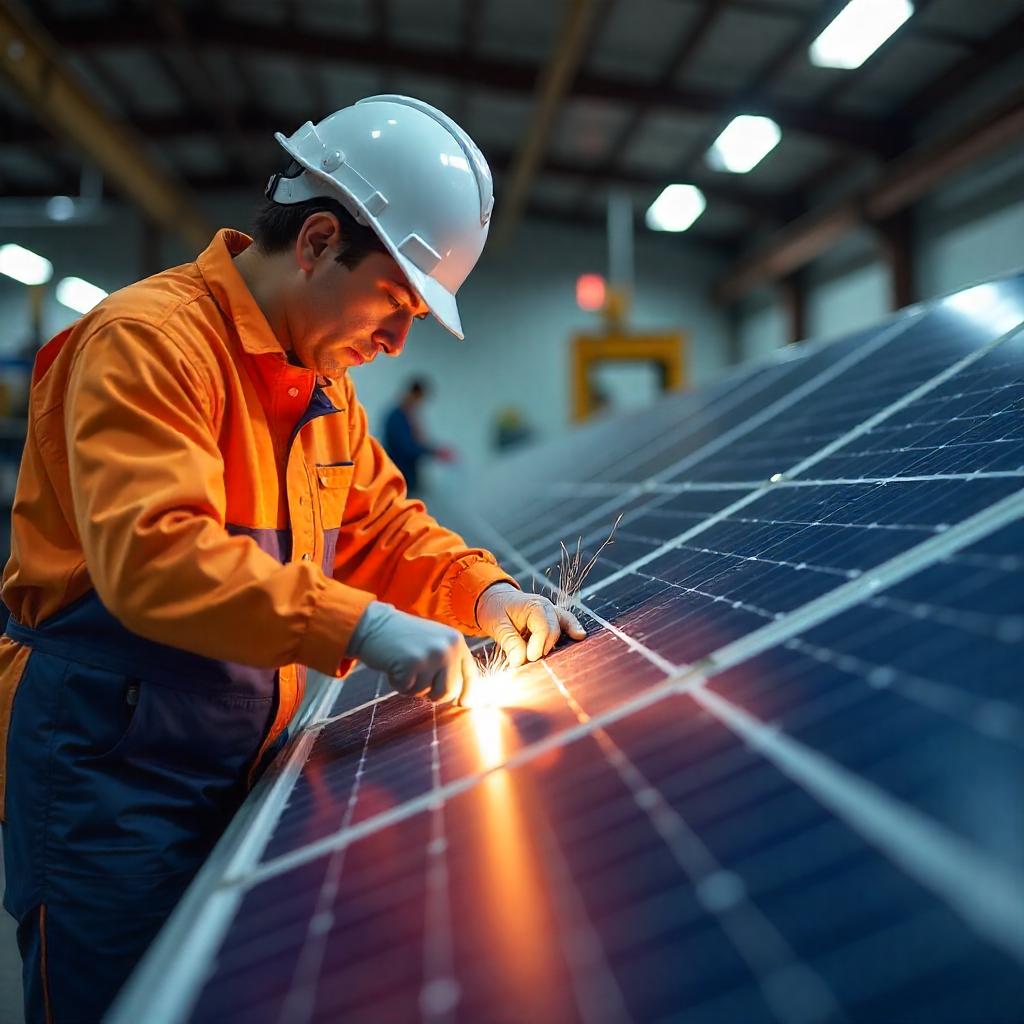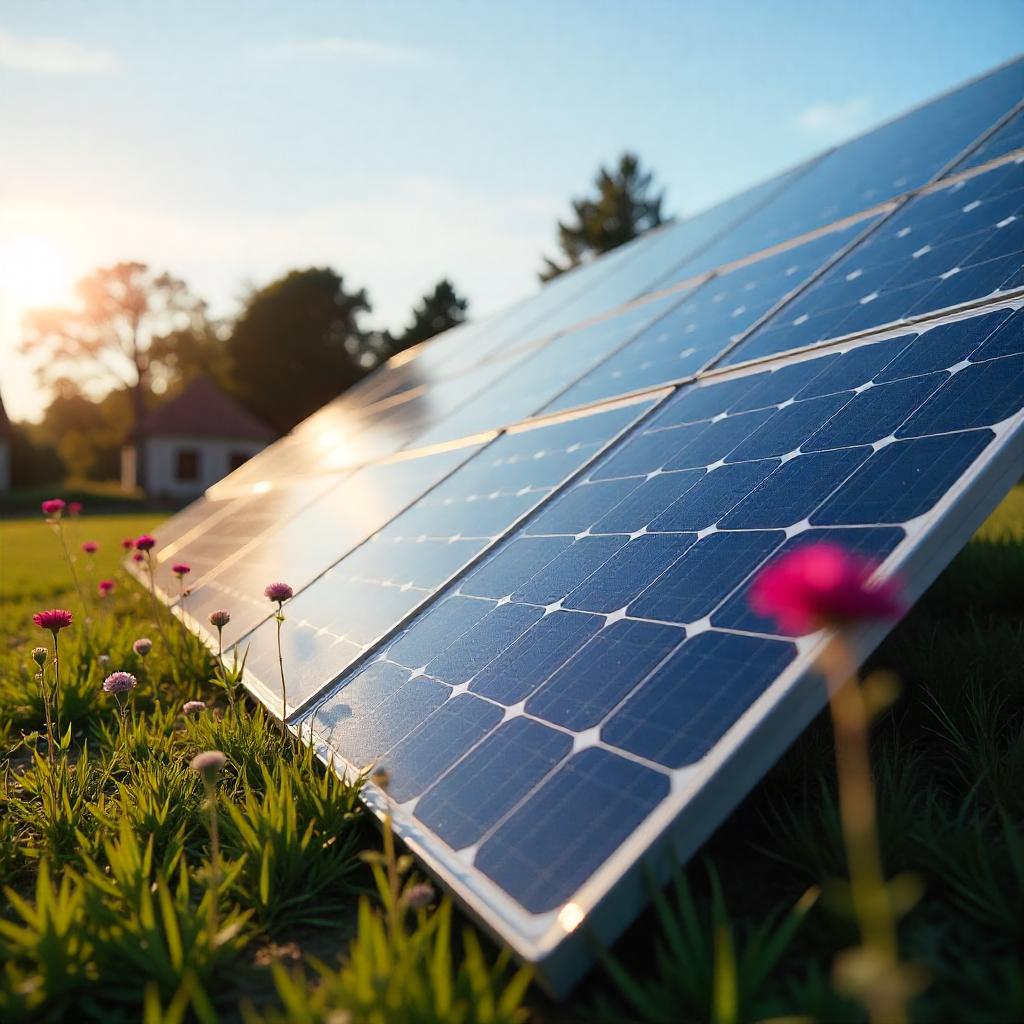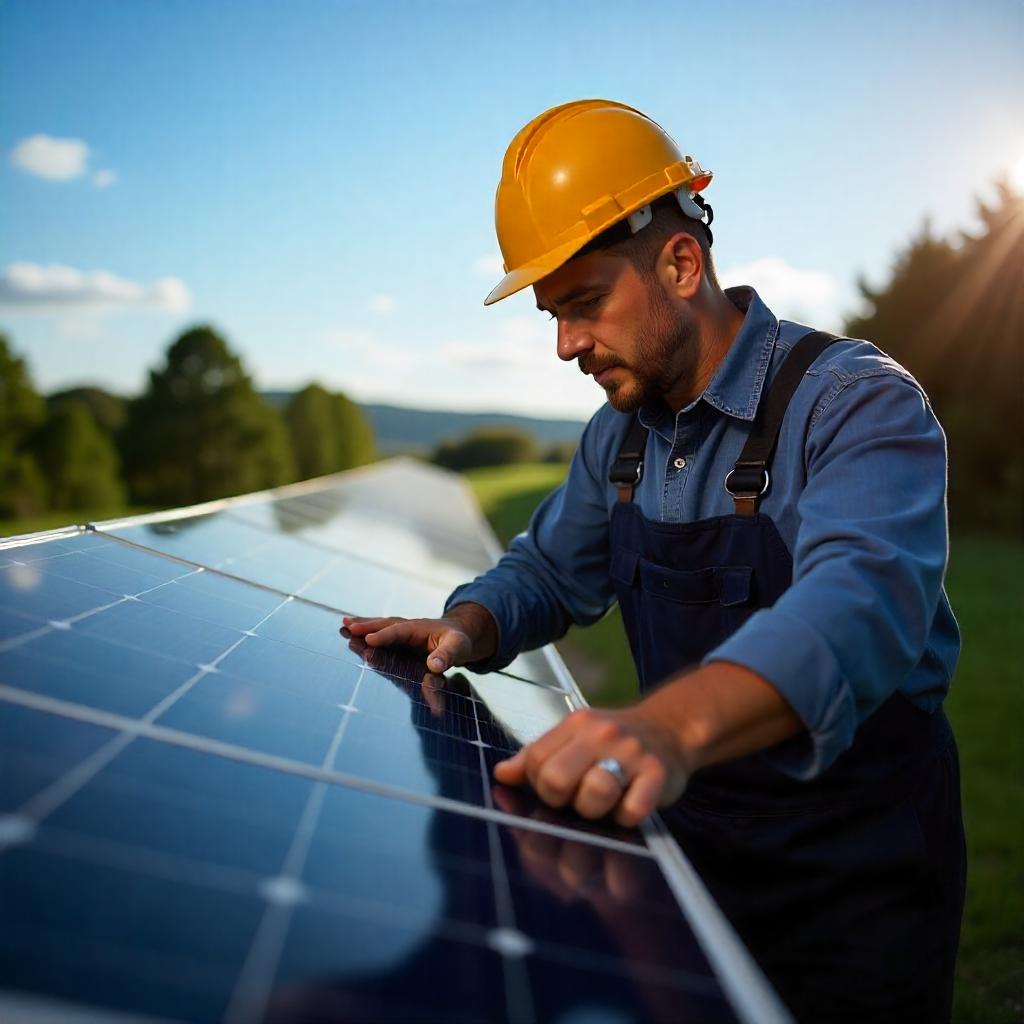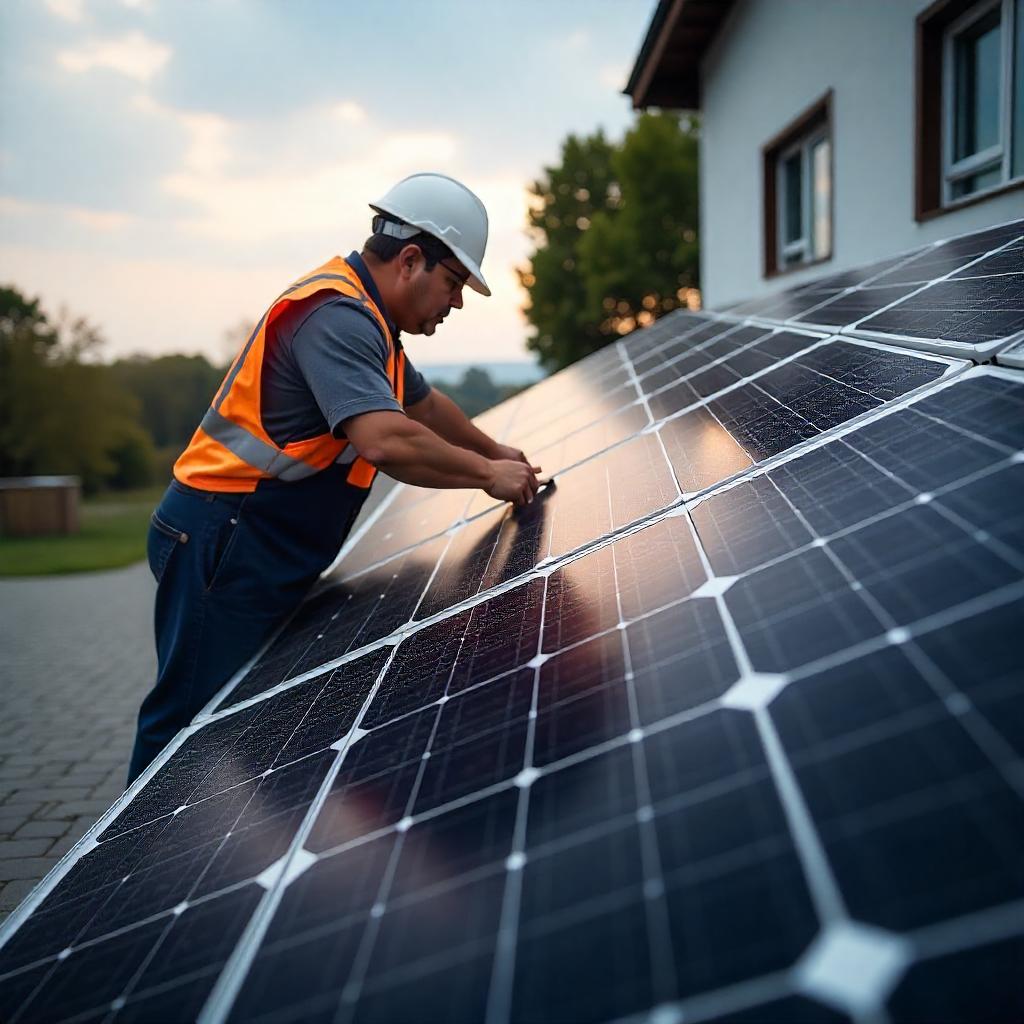Inside the Solar Revolution: A Comprehensive Guide to Solar Panel Manufacturing, Innovations, and Future Trends
Overview of Solar Panel Manufacturing
Solar panel manufacturing involves several key stages. Each stage is important for making sure the panels work well and last a long time. Here is an overview of the process:
- Raw Material Procurement: This is the first step where manufacturers gather materials like silicon, glass, and metals. Silicon is the main material used to make solar cells.
- Wafer Production: Manufacturers take silicon and slice it into thin pieces called wafers. These wafers create the base for the solar cells.
- Solar Cell Fabrication: In this stage, manufacturers turn the wafers into solar cells. They do this by adding layers that help capture sunlight. This step is crucial for the efficiency of the panels.
- Cell Testing: After making the solar cells, manufacturers test them to check their performance. This stage ensures that the cells can convert sunlight into electricity effectively.
- Panel Assembly: Next, manufacturers put the solar cells together to form panels. This includes adding protective layers and frames. Proper assembly is key to the durability of the panels.
- Quality Control: Before the panels leave the factory, they undergo quality checks. This step ensures that each panel meets safety and performance standards.
- Packaging and Shipping: Finally, manufacturers package the solar panels for delivery. This stage prepares them for installation at homes or businesses.
Each stage of solar panel manufacturing plays a significant role in making sure the final product is efficient and long-lasting.
Raw Materials Used in Solar Panel Production
Raw materials used in solar panel production are very important. These materials help create the panels that turn sunlight into electricity. Here are the main raw materials involved in making solar panels.
- Silicon
Silicon is the most common material in solar panels. It is a chemical element found in sand. Silicon helps create solar cells that absorb sunlight. When sunlight hits these cells, it generates electricity. - Glass
Glass is another key material. It covers the solar cells and protects them from weather. It also allows sunlight to reach the cells easily. The glass used in solar panels is strong and durable. - Metal
Metal, especially aluminum, is used in solar panels. Aluminum frames hold the panels together. They keep everything secure and safe. Metal also helps connect the solar cells to the rest of the solar power system. - Plastic
Plastic is used for different purposes in solar panels. It can be used for wiring insulation or to create protective layers. Plastic helps keep the solar panels lightweight and flexible.
These raw materials work together to create solar panels. Each one plays a special role in making sure the panels work well and last a long time.
Silicon Wafer Production
Silicon wafer production is an important process in making electronic devices. It involves several steps that turn raw silicon into thin slices called wafers. These wafers are used to build computer chips and other electronic parts.
- First, silicon is obtained from sand. This sand contains silica, which is a key ingredient. The sand goes through a heating process in a furnace. The heat makes the silica turn into silicon.
- Next, the silicon is melted in a furnace. This melting process helps to create pure silicon. The goal is to remove any impurities. Once the silicon is pure, it is formed into a large cylindrical shape called a boule. The boule is created by a method called crystal growth. This process involves slowly pulling the silicon from the molten state and allowing it to cool down.
- After the boule is formed, it needs to be sliced into thin wafers. A special saw cuts the boule into flat pieces. Each piece is a silicon wafer. The thickness of the wafers can vary, but they are usually very thin, around 0.5 mm to 1 mm.
- Once the wafers are cut, they go through a cleaning process. This step removes dust and any remaining particles. Clean wafers are important for the next steps in making electronic devices.
- The next step is polishing. The wafers are polished to make them smooth and shiny. This smooth surface is important for the layers that will be added later.
- Finally, the wafers are checked for quality. This quality check ensures that they meet the standards needed for semiconductor manufacturing. Only the best wafers move on to be used in making chips and other electronic components.
Silicon wafer production is a careful process. Each step is important to make sure the wafers are high quality for use in technology.
Photovoltaic Cell Fabrication
Photovoltaic cell fabrication involves changing silicon wafers into working photovoltaic cells. This process includes several steps.
- The first step is to prepare the silicon wafers. Silicon comes from sand. It is melted and formed into large blocks called ingots. These ingots are then sliced into thin pieces, which are the wafers.
- The second step is doping the silicon wafers. Doping means adding small amounts of other materials to the silicon. This makes the silicon better at collecting sunlight. The two common materials used for doping are phosphorus and boron.
- Next, the wafers go through an oxidation process. This means putting a layer of silicon dioxide on top of the wafers. This layer protects the silicon and helps it work better.
- After that, the wafers are treated with chemicals. This step improves how well the cells can capture sunlight. The chemicals create a special surface on the wafers.
- The final step is to connect the cells. Wires are attached to the cells so they can send electricity to other devices. Once all these steps are done, the photovoltaic cells are ready to be used in solar panels.
This process shows how simple materials like silicon can be turned into powerful tools for gathering energy from the sun.
Solar Module Assembly
Solar module assembly is an important process in creating solar panels. It involves putting together individual photovoltaic cells to make a complete solar module. Each step in the assembly is crucial for the module to work well.
- Gather Materials: The first step is to collect all the necessary materials. This includes photovoltaic cells, glass, backing material, and connectors. Each part plays a role in the function of the solar module.
- Prepare the Cells: Next, workers prepare the photovoltaic cells. They check each cell for damage and clean them to ensure they can absorb sunlight effectively.
- Lay Out the Cells: Workers then lay out the cells in a specific pattern. The arrangement is important for how well the module will produce electricity.
- Connect the Cells: After laying out the cells, workers connect them using metal strips. This step is vital because it allows the cells to work together to generate power.
- Attach the Backing Material: Once the cells are connected, workers attach a backing material. This material supports the cells and protects them from damage.
- Add the Glass Cover: The next step is to place a glass cover over the cells. This glass protects the cells from the weather and allows sunlight to pass through.
- Seal the Edges: Workers seal the edges of the module to keep moisture out. This step helps ensure the module lasts a long time.
- Test the Module: Finally, workers test the completed solar module. They check for any issues and ensure it produces electricity effectively.
Here is a table that summarizes the components and their functions:
| Component | Function |
| Photovoltaic Cells | Convert sunlight into electricity |
| Backing Material | Supports and protects the cells |
| Glass Cover | Protects the cells and lets sunlight in |
| Metal Strips | Connects the cells to work together |
| Sealant | Keeps moisture out to extend module life |
Quality Control and Testing
Quality control and testing are very important in manufacturing. They help ensure that products are safe and work well. Companies use strict measures to check their products. This prevents problems and keeps customers happy.
- Visual Inspection
Visual inspection is the first step. Workers look closely at each product. They check for any visible defects. If they see a problem, they fix it or throw it away. This method is fast and easy. - Functional Testing
Functional testing checks if a product works as it should. For example, if a toy should light up, testers make sure it lights up. This type of testing helps find issues that visual inspection might miss. - Performance Testing
Performance testing measures how well a product does its job. Companies test items under different conditions. They see if the products can handle stress. This shows if the product is reliable.
Checklist for Quality Control
- Check for visible defects
- Test if the product works
- Measure performance under stress
These quality control methods help keep products safe and effective. This is vital for customer satisfaction and trust in the brand.
Innovations in Solar Panel Manufacturing
Innovations in solar panel manufacturing have changed how we use solar energy. These advancements help make solar panels more efficient, lower costs, and support a cleaner environment.
One key innovation is bifacial solar panels. Bifacial panels can capture sunlight from both sides. This means they can produce more energy than traditional panels. They can work well in snowy areas because they can use sunlight reflected off the snow.
Another important advancement is perovskite solar cells. These cells use a special material that can absorb sunlight very well. They are cheaper to make than traditional silicon solar cells. Perovskite cells can also be made thinner and lighter. This makes them easier to install on different surfaces.
Integrated solar panels are also a big step forward. These panels blend into building materials, like roof tiles or windows. This means homes and buildings can generate energy without needing extra space for solar panels. They look nice and still work effectively.
Robotics in manufacturing is another innovation. Factories now use robots to make solar panels. Robots can work faster and more accurately than humans. This helps lower costs and improve quality.
Lastly, recycling old solar panels is becoming more common. Companies are finding ways to reuse materials from old panels. This helps reduce waste and supports sustainability.
These innovations show how solar panel manufacturing is changing. Each advancement brings its own benefits, making solar energy more accessible and effective.
Global Leaders in Solar Panel Manufacturing
Global leaders in solar panel manufacturing play a huge role in providing clean energy. Many countries and companies lead in making solar panels.
- China: China is the biggest player in solar panel manufacturing. It produces over half of the world’s solar panels. The country has many factories that make solar cells and modules.
- United States: The United States is another key player. It has several companies that focus on solar technology. Some American companies create innovative solar products to improve efficiency.
- Germany: Germany is known for high-quality solar panels. It has a strong solar market. The country supports green energy and invests in solar technology.
- Japan: Japan is also important in solar panel production. It has companies that develop advanced solar technologies. The country focuses on improving solar efficiency and storage.
- South Korea: South Korea is a growing player in solar manufacturing. It has companies that produce a large amount of solar panels. The country is investing in renewable energy.
- Taiwan: Taiwan is known for its strong solar industry. It produces high-quality solar cells. The country plays a significant role in the global market.
These countries and companies drive the solar panel industry. Their contributions help to increase the use of renewable energy worldwide.
Challenges in Solar Panel Manufacturing
Challenges in solar panel manufacturing are significant. The industry faces various issues that can affect production and costs.
- High initial costs: The setup to create solar panels requires a lot of money. This can be a barrier for new companies. For example, a small startup may not afford the machinery needed to produce panels.
- Material shortages: Solar panels need specific materials, like silicon. Sometimes, these materials can be hard to find. This can slow down production. In 2021, a shortage of silicon affected many solar panel companies.
- Quality control issues: Ensuring that each solar panel meets quality standards is tough. If a panel does not work well, it can lead to waste and extra costs. Some companies spend a lot of time testing panels to avoid this issue.
- Environmental concerns: Making solar panels can harm the environment. The chemicals used in production can pollute air and water. Companies need to find ways to make their processes cleaner.
- Competition: Many companies make solar panels. This means they must compete to offer the best prices and quality. For example, if a new company enters the market with cheaper panels, it can affect sales for others.
These challenges show that solar panel manufacturing is not easy. Businesses must work hard to overcome these issues to succeed in the market.
Future Trends in Solar Panel Manufacturing
Future trends in solar panel manufacturing show exciting changes. These trends will change how solar panels are made and used.
- One trend is the growth of more efficient solar panels. Manufacturers are creating panels that can capture more sunlight. This means they can produce more energy. Higher efficiency helps reduce costs and makes solar power more appealing.
- Another trend is the use of new materials. Companies are exploring options like perovskite. This material can be cheaper and lighter than traditional silicon. Using perovskite can make solar panels easier to install and transport.
- Automation is also changing solar panel manufacturing. Machines and robots are taking over some tasks. This can speed up production and lower labor costs. Automation can help companies produce panels faster and more consistently.
- Recycling old solar panels is becoming important. As more panels are made, it is crucial to find ways to recycle them. This can help reduce waste and protect the environment. Companies are looking for ways to reuse materials from old panels.
- Finally, smart solar technology is on the rise. This includes panels that can communicate with other devices. Smart panels can adjust their angle to capture more sunlight. This technology can improve energy production.
These trends in solar panel manufacturing show a bright future for clean energy. The industry is evolving to be more efficient, affordable, and environmentally friendly.
Anmak Solar: Your Trusted Solar Panel Installation Partner
Anmak Solar is a reputable service provider that specializes in solar panel installation. They focus on making solar energy easy and accessible for everyone. Their team has years of experience in the industry. Anmak Solar is committed to customer satisfaction. They work hard to meet the needs of each client.
Anmak Solar offers a comprehensive process for their customers. They start with free consultations where clients can ask questions and learn more about solar energy. After the consultation, they conduct site assessments to evaluate the best options for installation. They also help clients understand and apply for government subsidies, which can lower the cost of solar systems.
Anmak Solar uses advanced technology in their installations. They choose high-quality materials to ensure the solar panels last a long time. Their dedication to sustainability means they care about the environment. They want to help clients reduce their carbon footprint.
Anmak Solar offers competitive pricing for their services. They want solar energy to be affordable for as many people as possible. They provide flexible financing options, making it easier for clients to switch to solar energy without breaking the bank.
- Free consultations to explain solar energy options
- Site assessments to find the best installation spots
- Assistance with government subsidies
- Use of advanced technology and high-quality materials
- Commitment to sustainability and reducing carbon footprints
- Competitive pricing for services
- Flexible financing options for easier access to solar energy
Conclusion: Understanding the Solar Panel Manufacturing Process
Understanding the solar panel manufacturing process is important. It helps people know how solar panels are made and why they are a good choice for energy. When consumers understand this process, they can make better decisions about using solar energy. Solar energy can save money and help the environment.
People should think about the benefits of solar energy. It is clean and renewable. Trusted installation partners, like Anmak Solar, can help with the installation. They make the switch to solar energy easy and smooth.
For those interested, it is a good idea to contact Anmak Solar. They can provide more information about solar panel installations and answer any questions.



